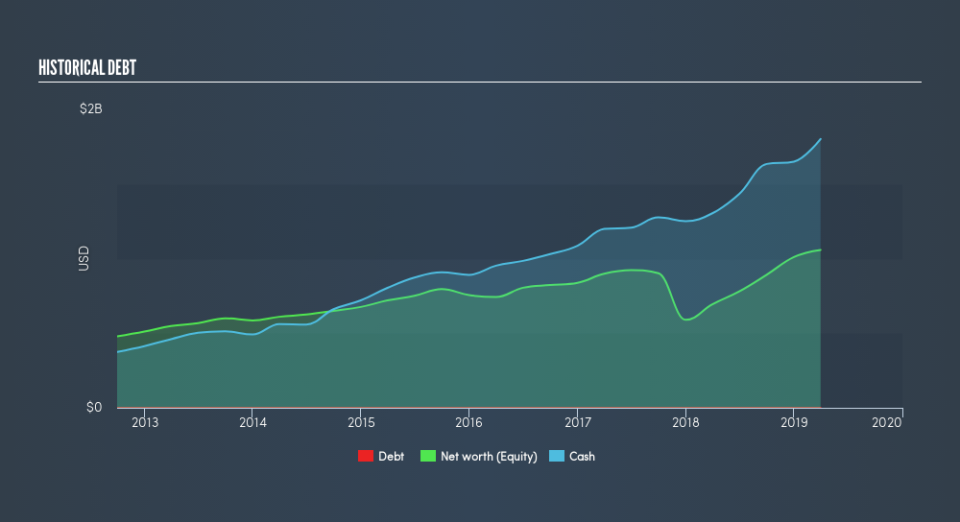What You Must Know About Fortinet, Inc.'s (NASDAQ:FTNT) Financial Health

Want to participate in a short research study? Help shape the future of investing tools and you could win a $250 gift card!
Fortinet, Inc. (NASDAQ:FTNT), a large-cap worth US$14b, comes to mind for investors seeking a strong and reliable stock investment. Most investors favour these big stocks due to their strong balance sheet and high market liquidity, meaning there are an abundance of stock in the public market available for trading. These companies are resilient in times of low liquidity and are not as strongly impacted by interest rate hikes as companies with lots of debt. Using the most recent data for FTNT, I will determine its financial status based on its solvency and liquidity, and assess whether the stock is a safe investment.
Check out our latest analysis for Fortinet
Does FTNT face the risk of succumbing to its debt-load?
What is considered a high debt-to-equity ratio differs depending on the industry, because some industries tend to utilize more debt financing than others. Generally, large-cap stocks are considered financially healthy if its ratio is below 40%. The good news for investors is that Fortinet has no debt. It has been operating its business with zero debt and utilising only its equity capital. Investors' risk associated with debt is virtually non-existent with FTNT, and the company has plenty of headroom and ability to raise debt should it need to in the future.
Can FTNT pay its short-term liabilities?
Given zero long-term debt on its balance sheet, Fortinet has no solvency issues, which is used to describe the company’s ability to meet its long-term obligations. However, another measure of financial health is its short-term obligations, which is known as liquidity. These include payments to suppliers, employees and other stakeholders. At the current liabilities level of US$1.3b, it seems that the business has maintained a safe level of current assets to meet its obligations, with the current ratio last standing at 1.84x. The current ratio is calculated by dividing current assets by current liabilities. Usually, for Software companies, this is a suitable ratio since there's a sufficient cash cushion without leaving too much capital idle or in low-earning investments.
Next Steps:
FTNT has zero debt in addition to ample cash to cover its short-term commitments. Its strong balance sheet reduces risk for the company and shareholders. Keep in mind I haven't considered other factors such as how FTNT has performed in the past. I suggest you continue to research Fortinet to get a more holistic view of the stock by looking at:
Future Outlook: What are well-informed industry analysts predicting for FTNT’s future growth? Take a look at our free research report of analyst consensus for FTNT’s outlook.
Valuation: What is FTNT worth today? Is the stock undervalued, even when its growth outlook is factored into its intrinsic value? The intrinsic value infographic in our free research report helps visualize whether FTNT is currently mispriced by the market.
Other High-Performing Stocks: Are there other stocks that provide better prospects with proven track records? Explore our free list of these great stocks here.
We aim to bring you long-term focused research analysis driven by fundamental data. Note that our analysis may not factor in the latest price-sensitive company announcements or qualitative material.
If you spot an error that warrants correction, please contact the editor at editorial-team@simplywallst.com. This article by Simply Wall St is general in nature. It does not constitute a recommendation to buy or sell any stock, and does not take account of your objectives, or your financial situation. Simply Wall St has no position in the stocks mentioned. Thank you for reading.

